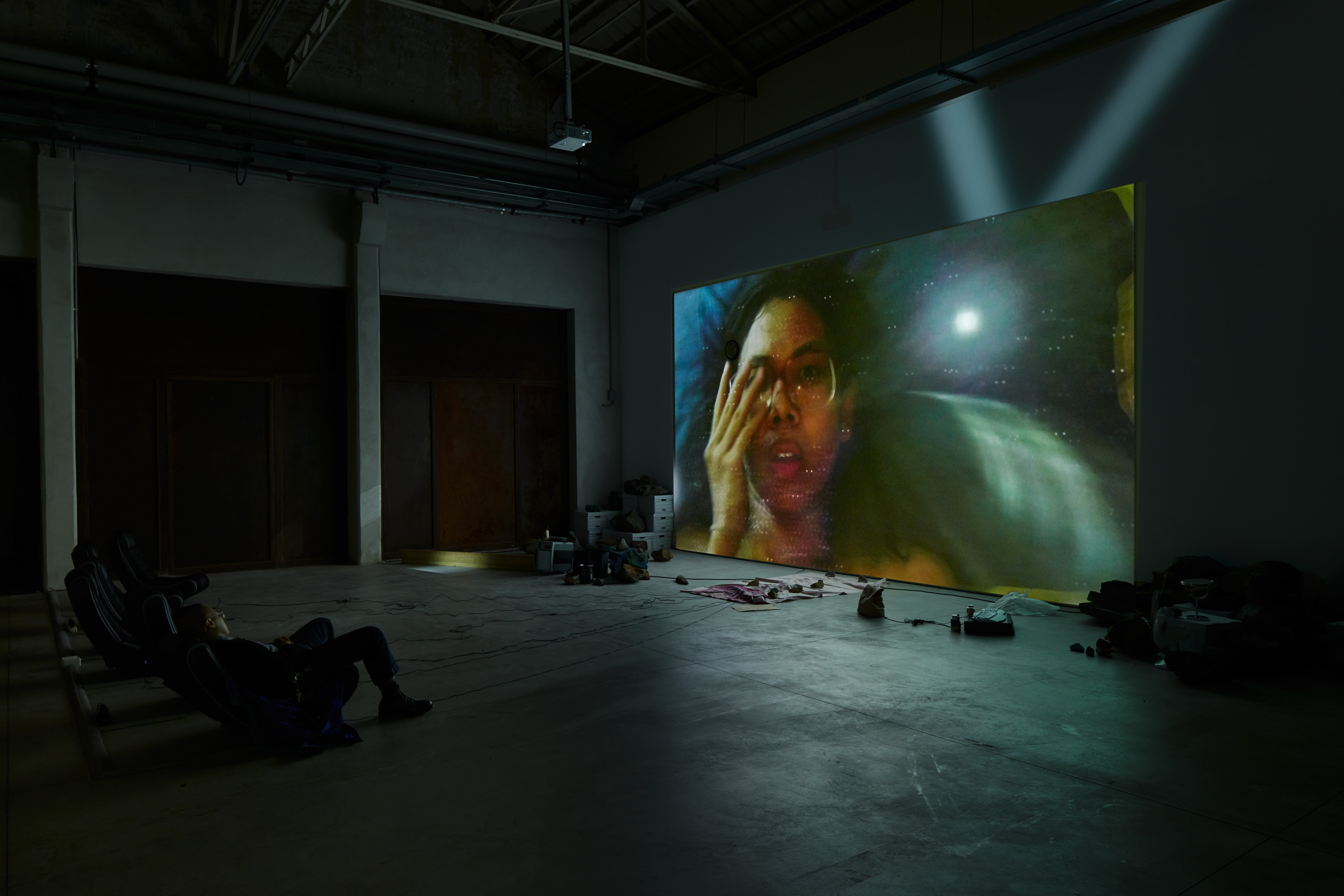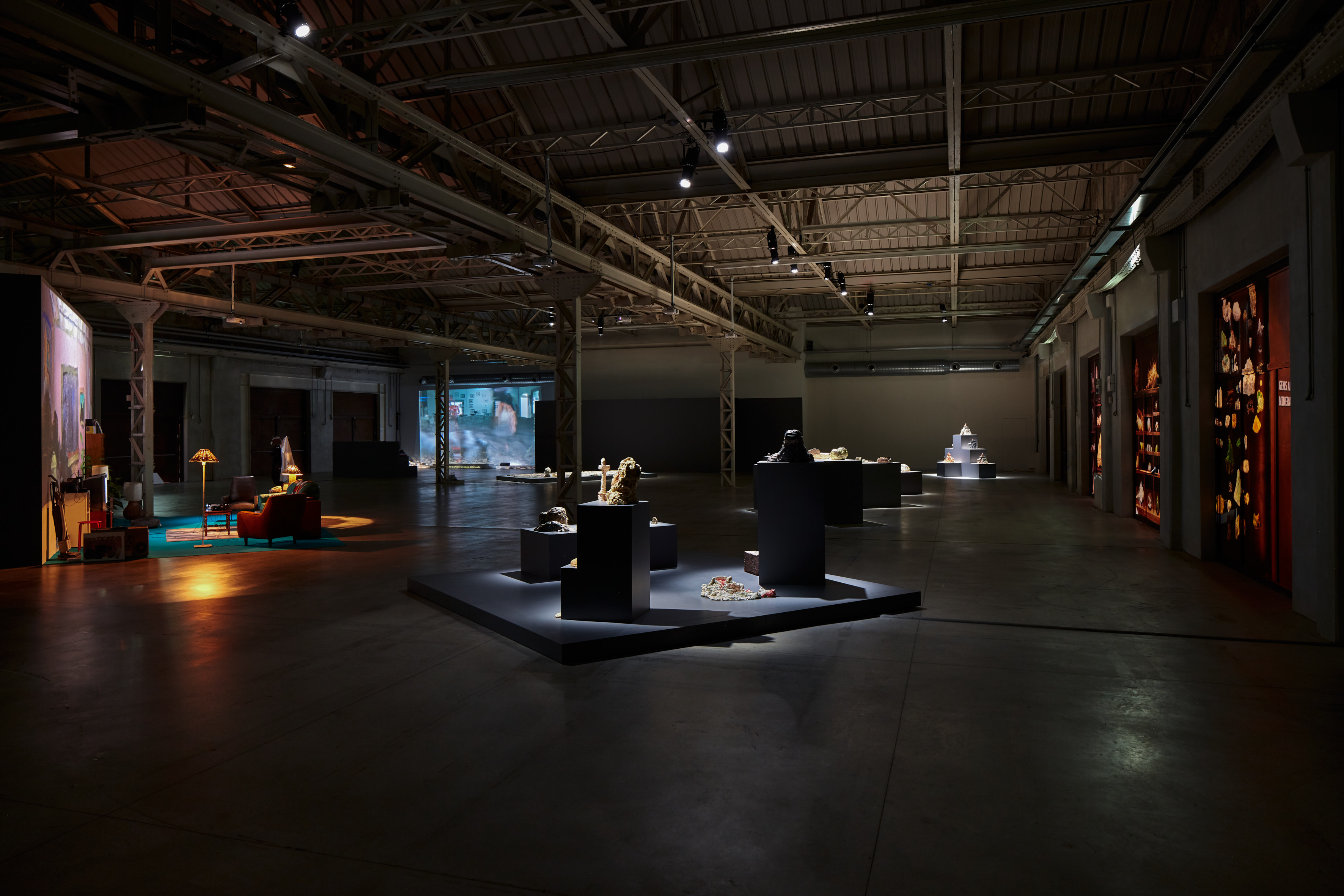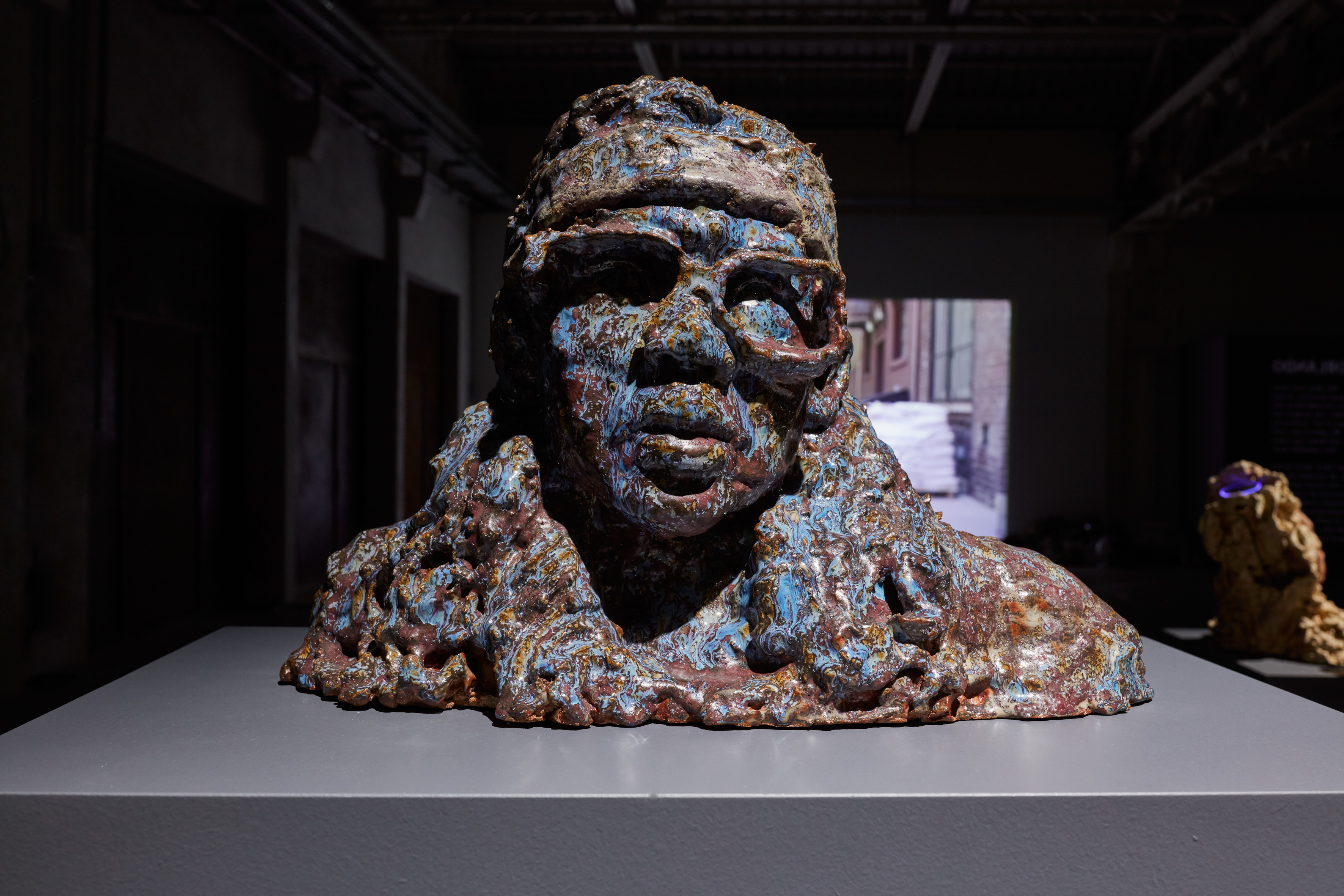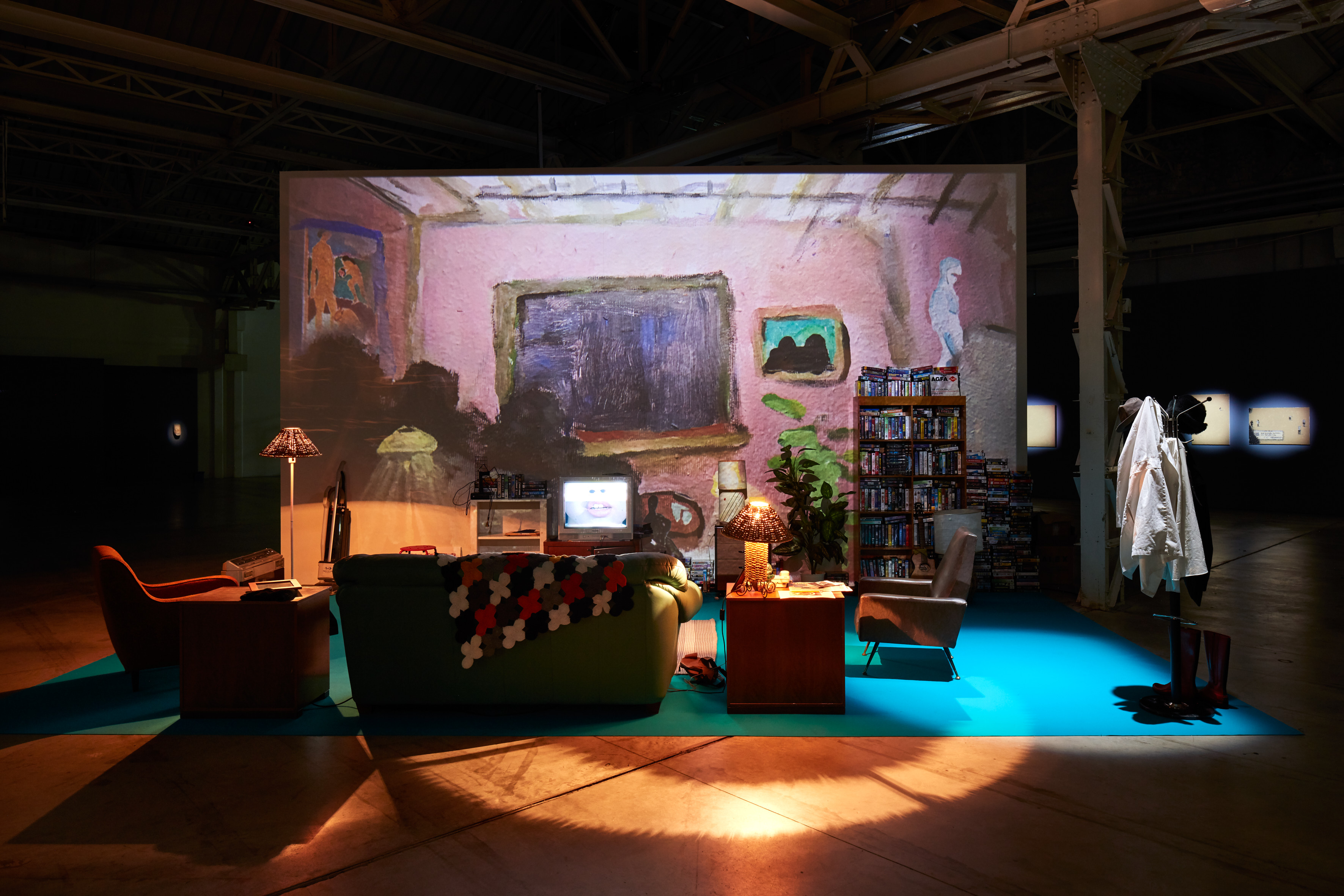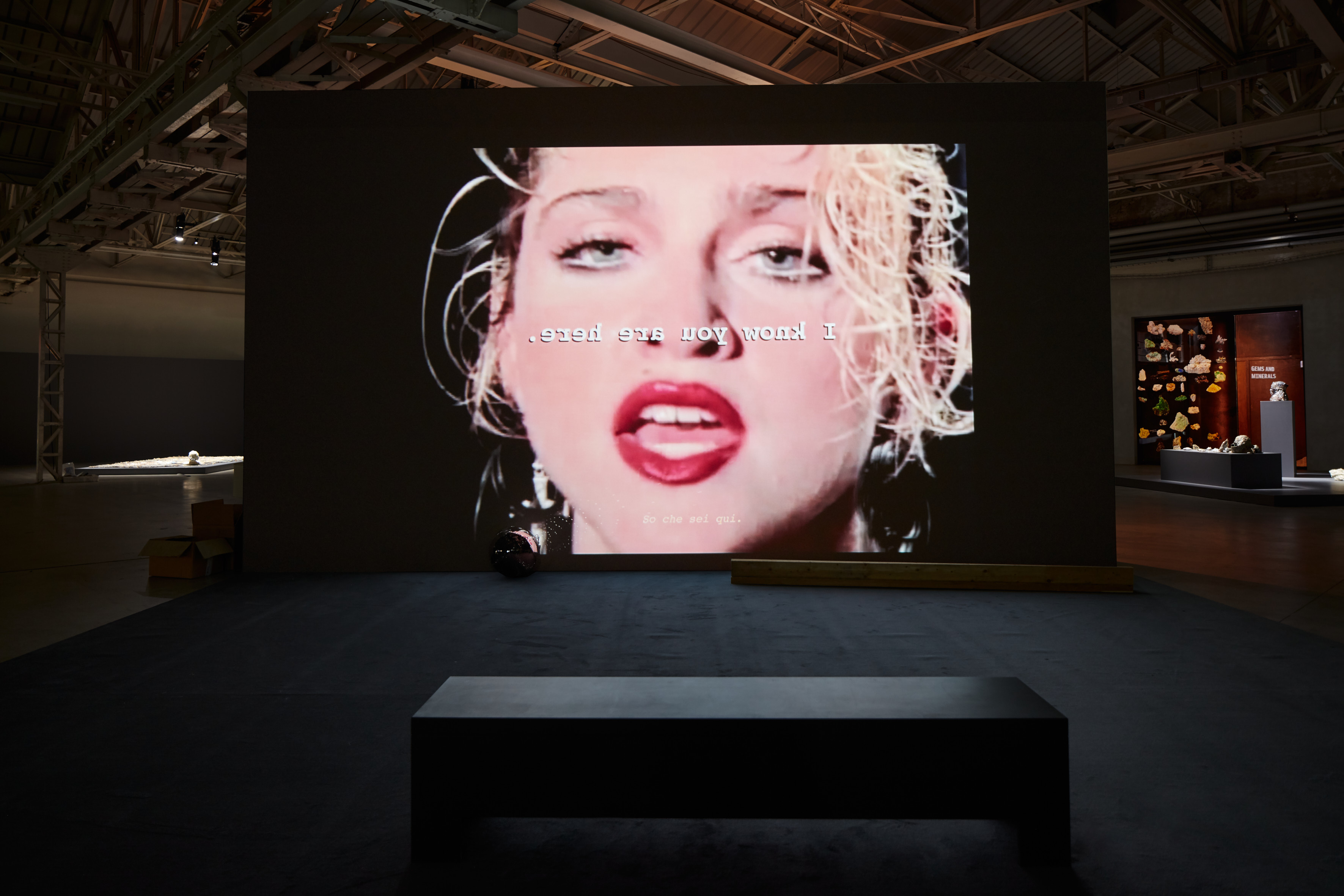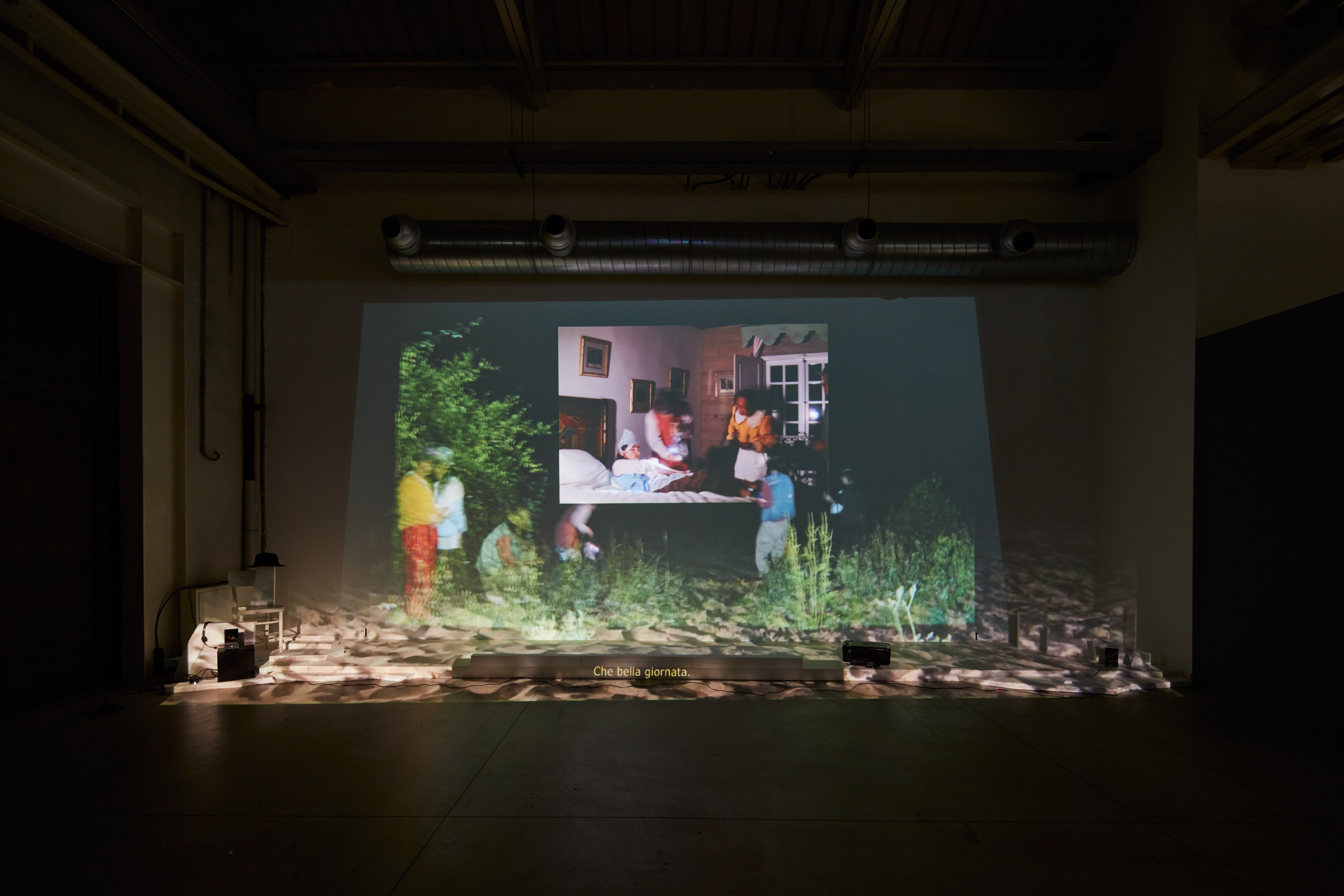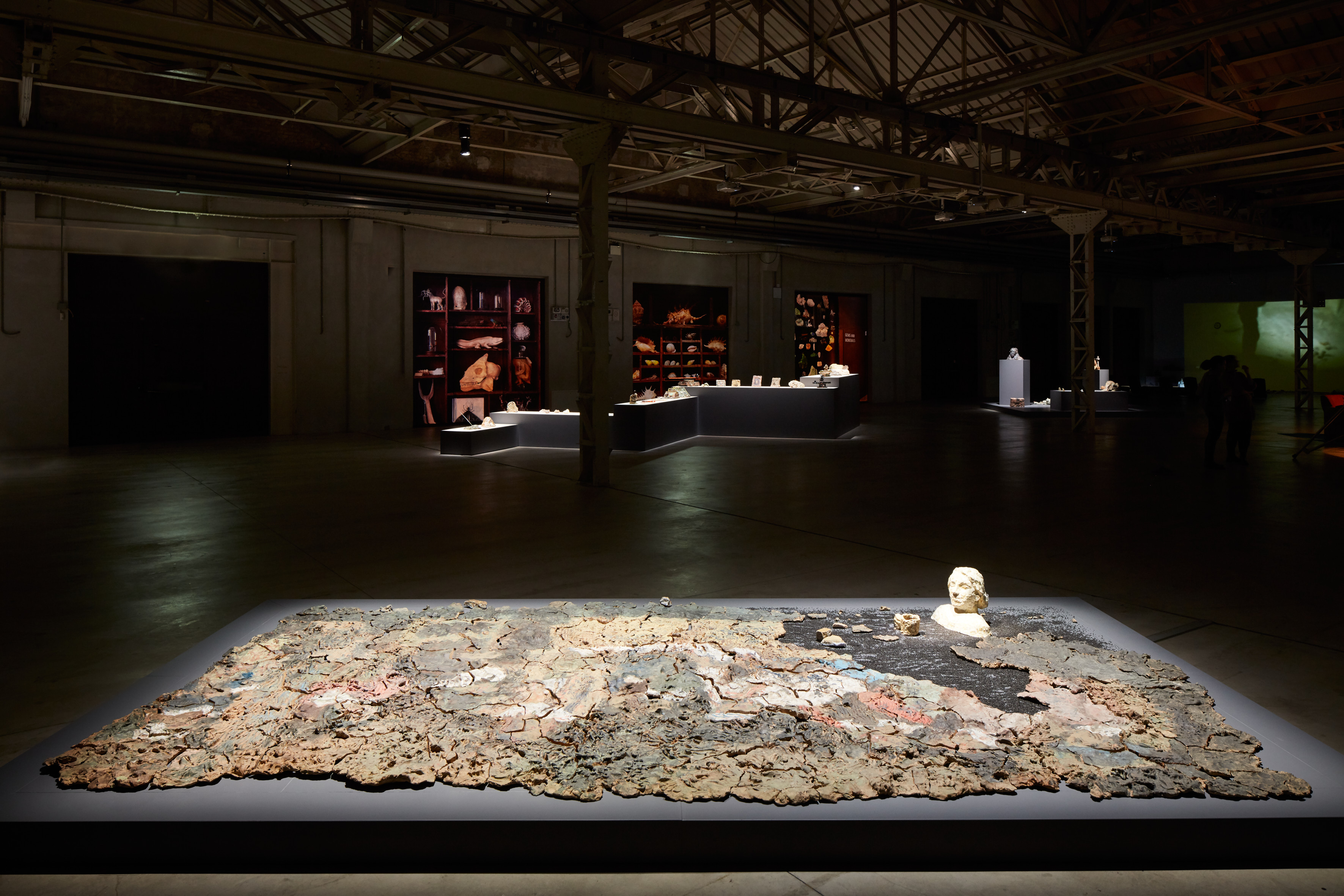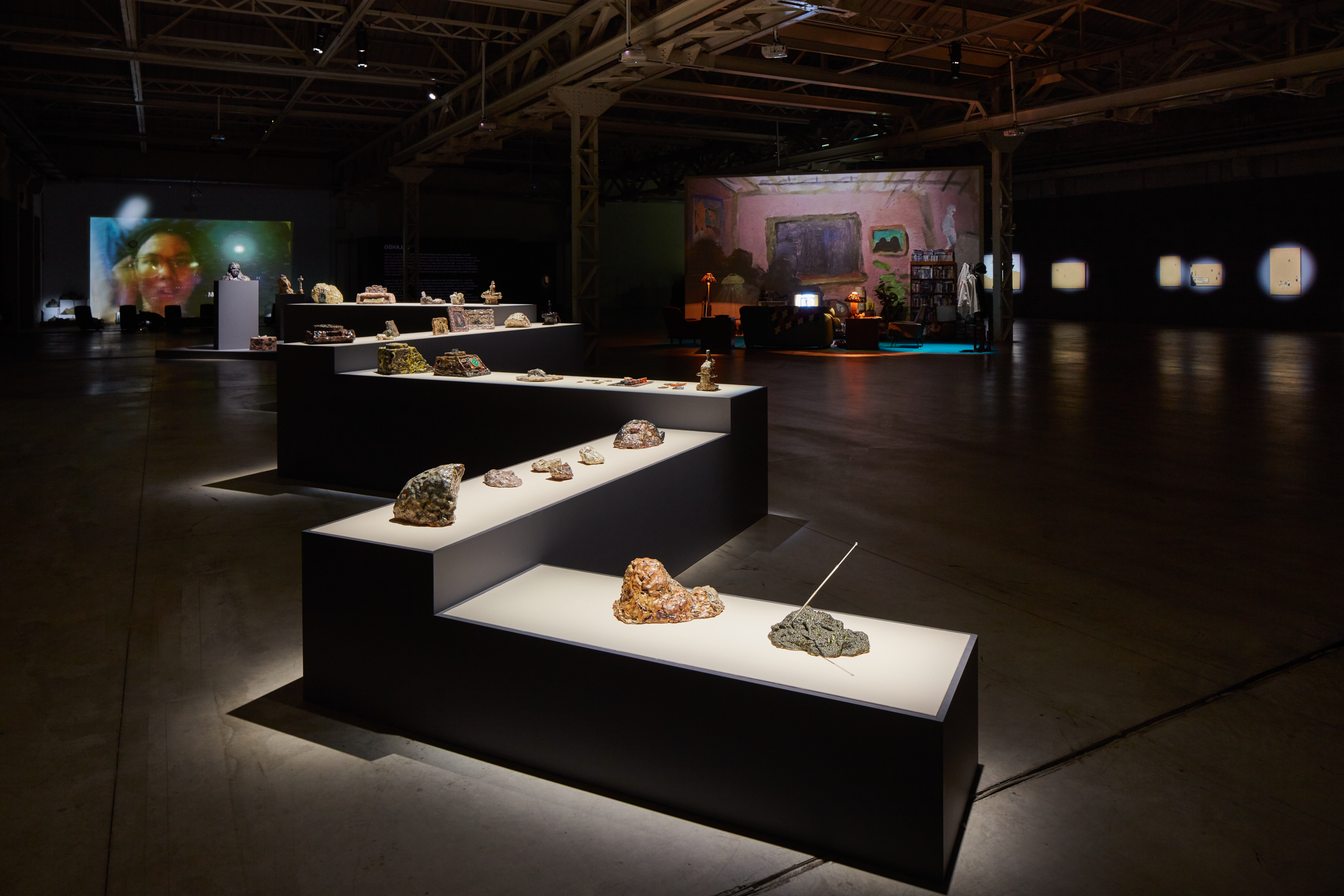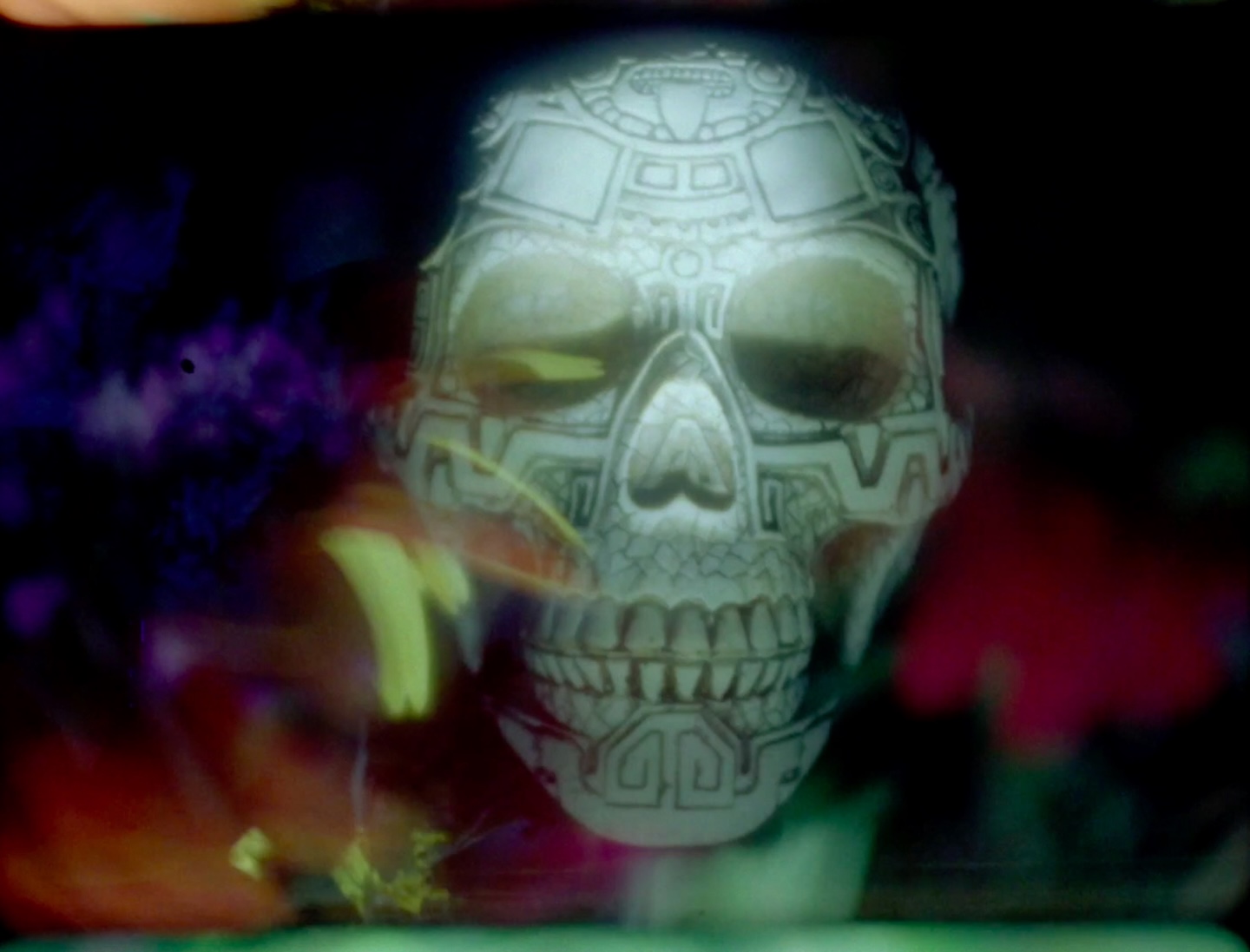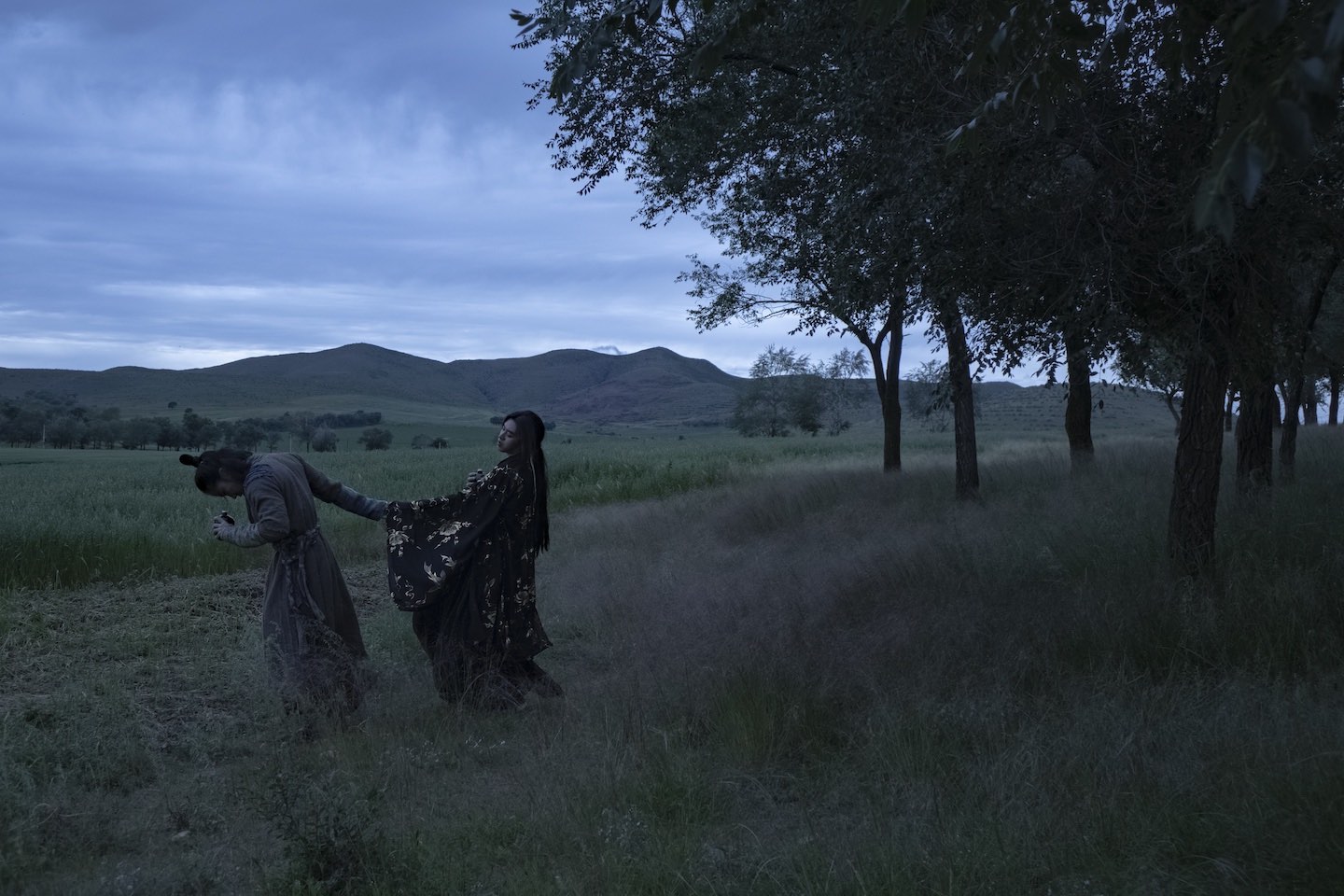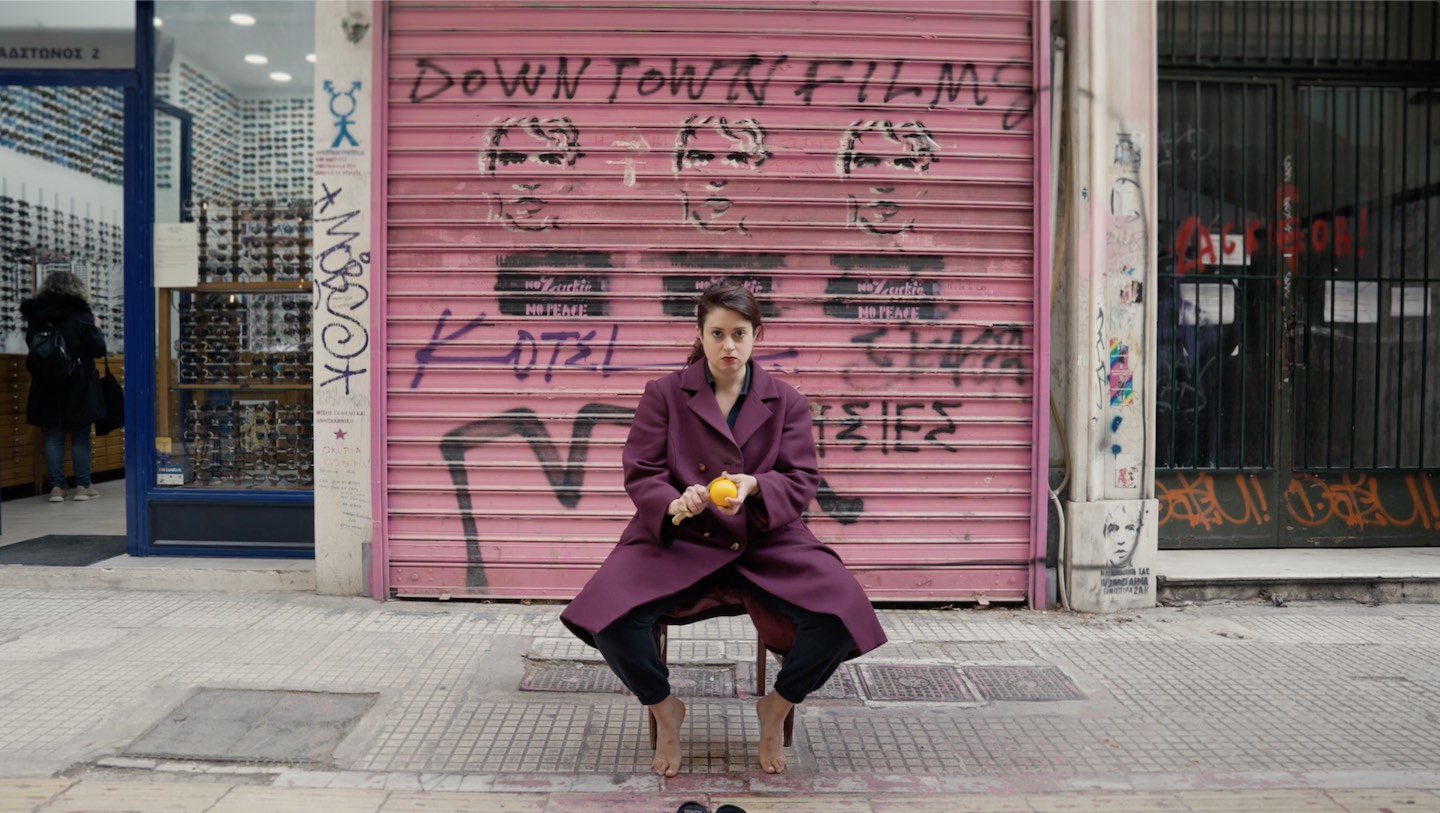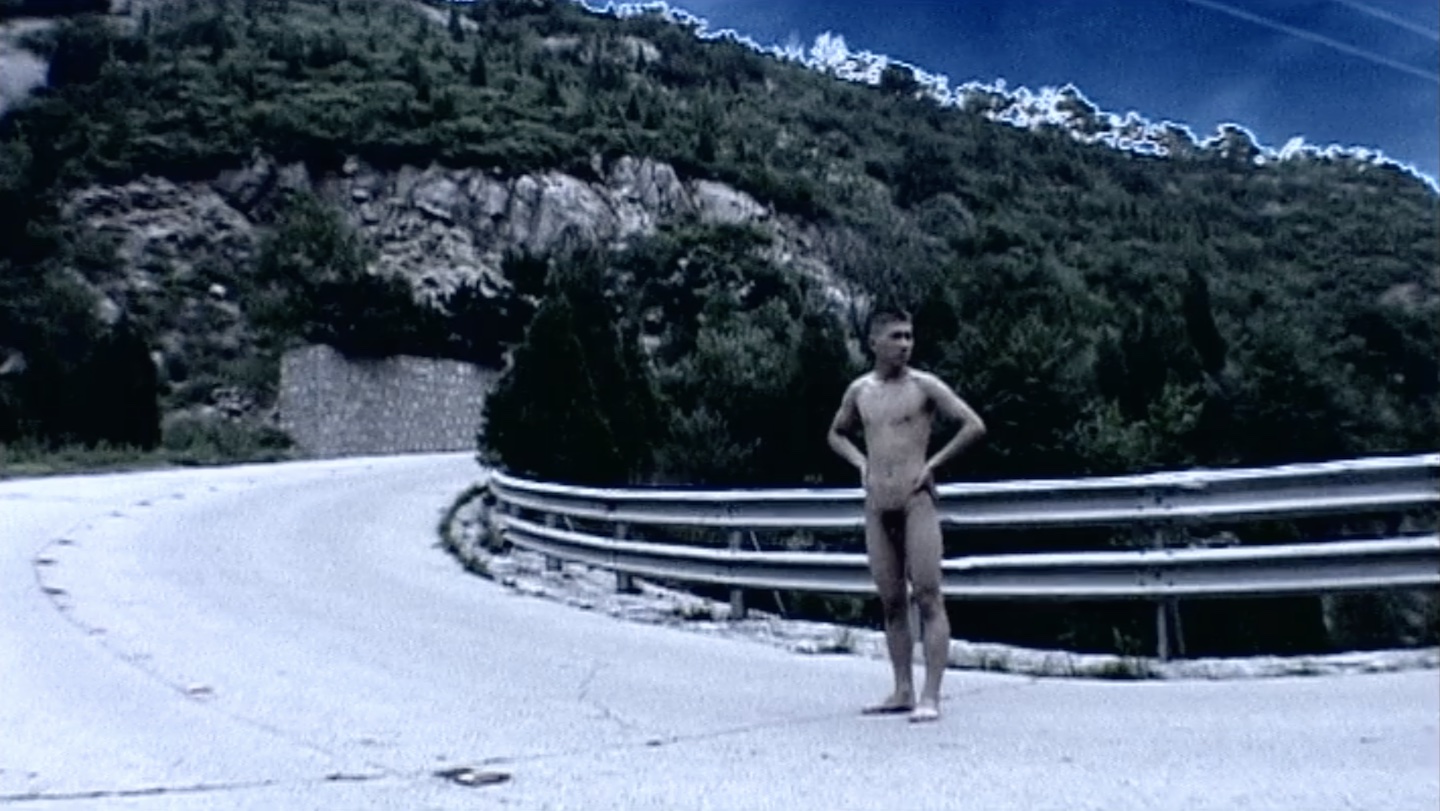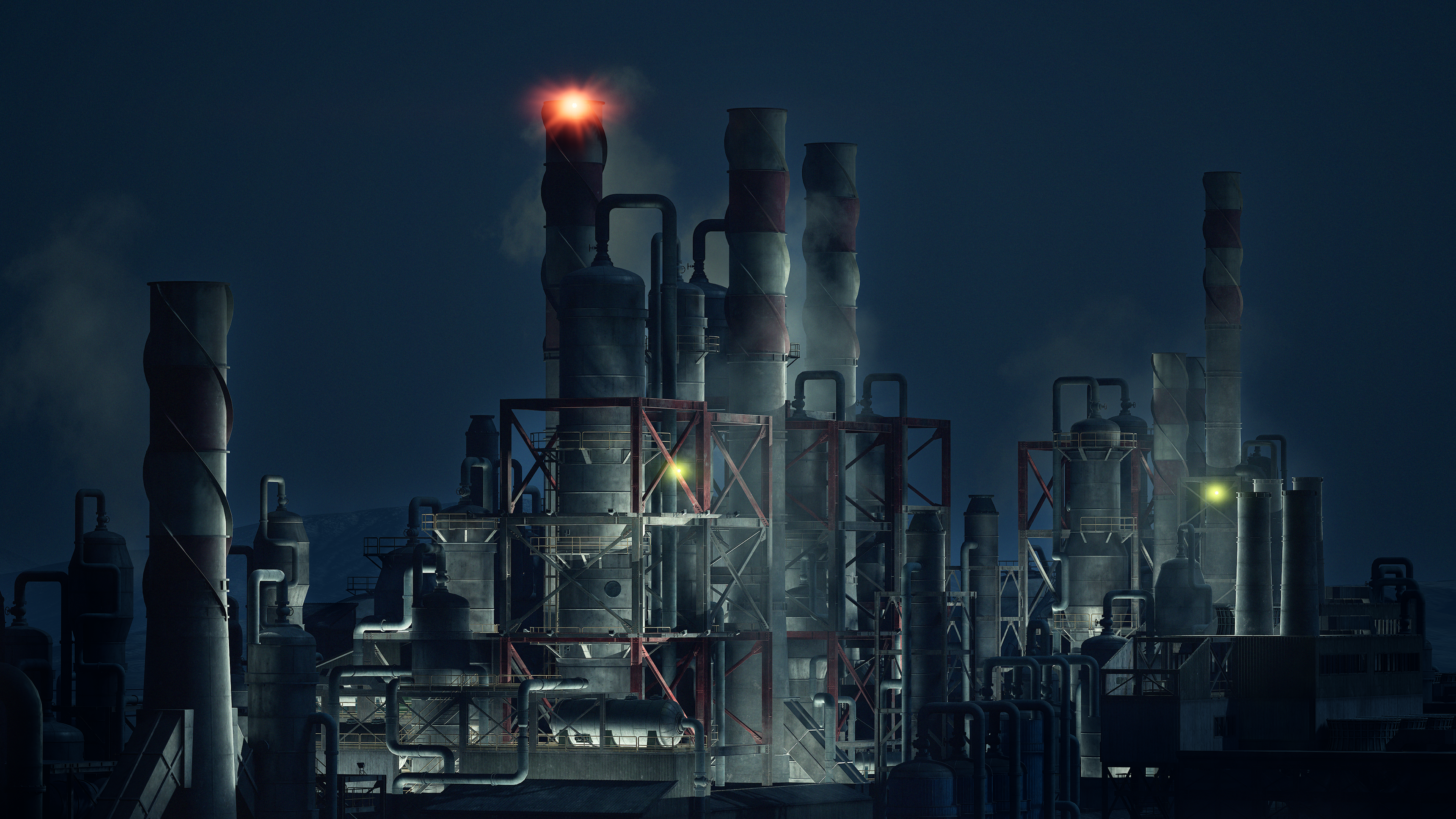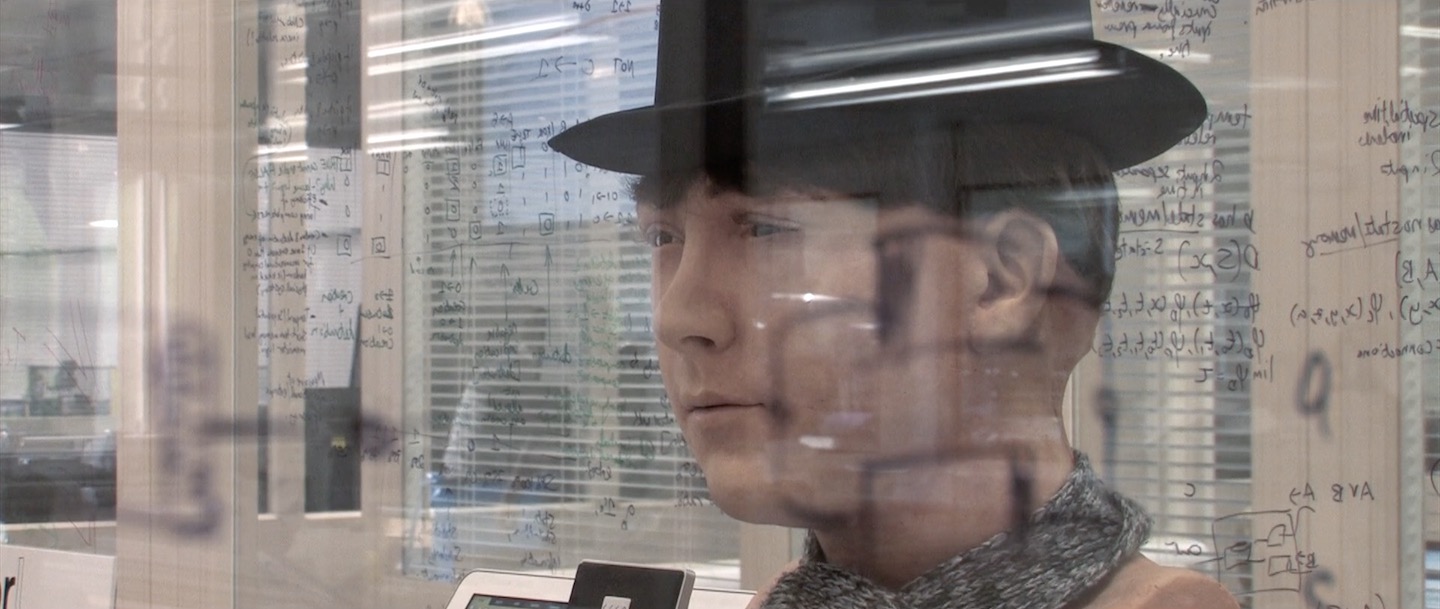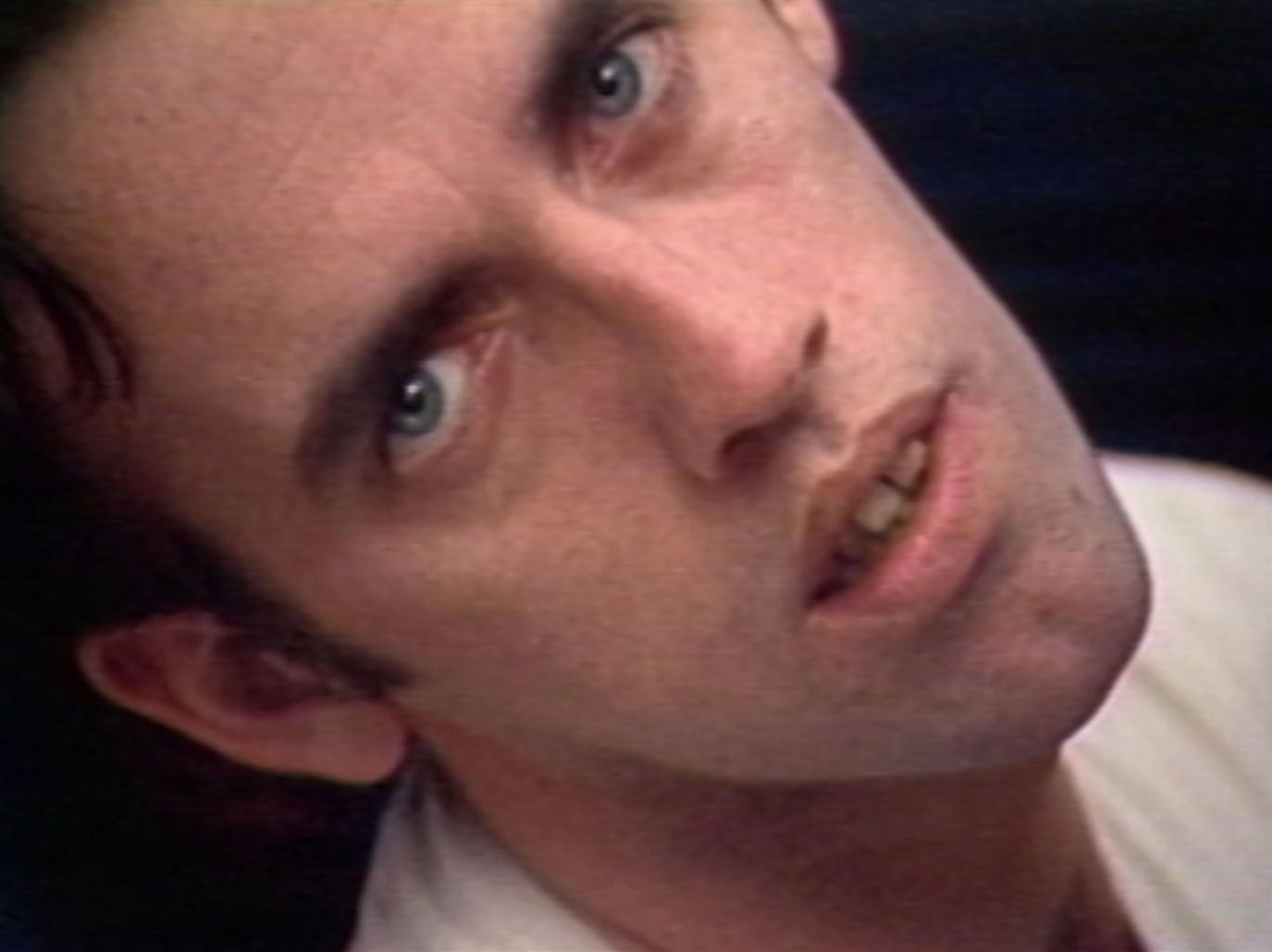February 20, 2020–January 10, 2021
Contrary to the press materials for Trisha Baga’s “the eye, the eye and the ear,” which liken the presentation to that of a natural history museum, the New York-based artist’s first institutional exhibition in Italy recalls the Egyptian Theater fad of golden-age Hollywood. A procession of “Hypothetical Artifacts” (2015–20), a series of ceramics sculptures precisely arranged on a plinth that zig-zags like a snake, offer the first hint of an architectural craze that followed the 1922 discovery of Tutankhamen’s tomb. In this “geological corridor of evolution,” as the artist describes it, everyday objects such as picture frames, a printer, and a microscope are rendered like fossilized movie props. Several of these pieces appear in video installations positioned around the darkened gallery. Spot-lit and decorated with plants, lamps, furniture, and other items, the installations resemble sets on a soundstage.
The “Hypothetical Artifacts” are displayed to one side of the dark, majestic spaces of Pirelli Hangar Bicocca—a cathedral-like black box both geographically and architecturally opposed to the light-flooded, neo-Renaissance Prada Foundation citadel on the other side of Milan. Nearby, another group from the same series—ceramic poodle heads resembling flame-topped Sphinxes—are placed on a pyramidal plinth. Both display surfaces bring to mind the theories of the local Renaissance painter Gian Paolo Lomazzo (1538–92), who proposed the forma serpentinata (“serpentine shape”) and the pyramid as ideal vessels for the decidedly anti-naturalist figuration of Mannerism, a style that he helped to develop.
This reading might also be applied to the convulsive onscreen action of the video installations. In Madonna y el Niño (2010) the iconic pop star is revealed as a semi-mystical embodiment of universal dark matter, while There’s NO “I” in Trisha (2005–07) is a bittersweet interrogation of sexuality and gender nonconformity, overloading the vernacular register of a soap opera in which Baga plays all the characters. Mollusca & The Pelvic Floor (2018), meanwhile, is a psychedelic science fiction revolving around a version of the Alexa Echo Dot virtual assistant. These hyperactive, moving-image montages recall Mannerism’s penchant for compositional tension and instability, while her condensations and dispersions of sub-frames and trompe l’oeil screens bring to mind the style’s celebration of artifice over a mimetic relationship with nature.
Baga foregrounds the impossibility of attaining universal truth through art. This is most apparent in her adoption of the modes of investigative journalism and scientific documentary in her video installations. Abdicating the concept of “style” as an identifiable pattern of filmic solutions, Baga instead presents multiple layers and framings, intoxicating visual and sound effects, imagery taken from the software she uses to edit the work, narrative mise en abymes, and off-screen noises. In these video installations, she dissects the filmic body into its constituent parts—sound, image, voiceover, and so on—before reassembling them into hypertrophic Frankenstein’s monsters. These and other dissonant elements continuously and invasively perforate the diegetic surface of Baga’s videos, making them feel like rapid-fire attacks against the viewers’ suspension of disbelief. The protagonist is, one might say, the editing process itself.
The video 1620 (2020), made for this exhibition, explores a symbol of European colonization of the United States-to-be: Plymouth Rock, which is believed to have marked the place where in 1620 the Pilgrims disembarked from the Mayflower and founded the eponymous colony. A voiceover identifies in the rock the possibility of studying “narrative stem cells,” which, before they mutated, represented an earlier stage of American narrative production. Notably, this mineral relic was not mentioned in accounts of the period, first appearing in stories a century later. Baga reveals how this object has been broken and displaced in the course of its veneration, due to carelessness, bad judgment, or economic calculation. The emotional investment in this symbolic and literal cornerstone of a community’s foundational myth morphs, here, into a tale of dispersion and multiplication. It makes a daring and captivating analogy with the frail status of “truth” and individual and national identity today—not to mention current debates around the historical monuments that generations have been trained to recognize, naively, as a natural part of their heritage.
